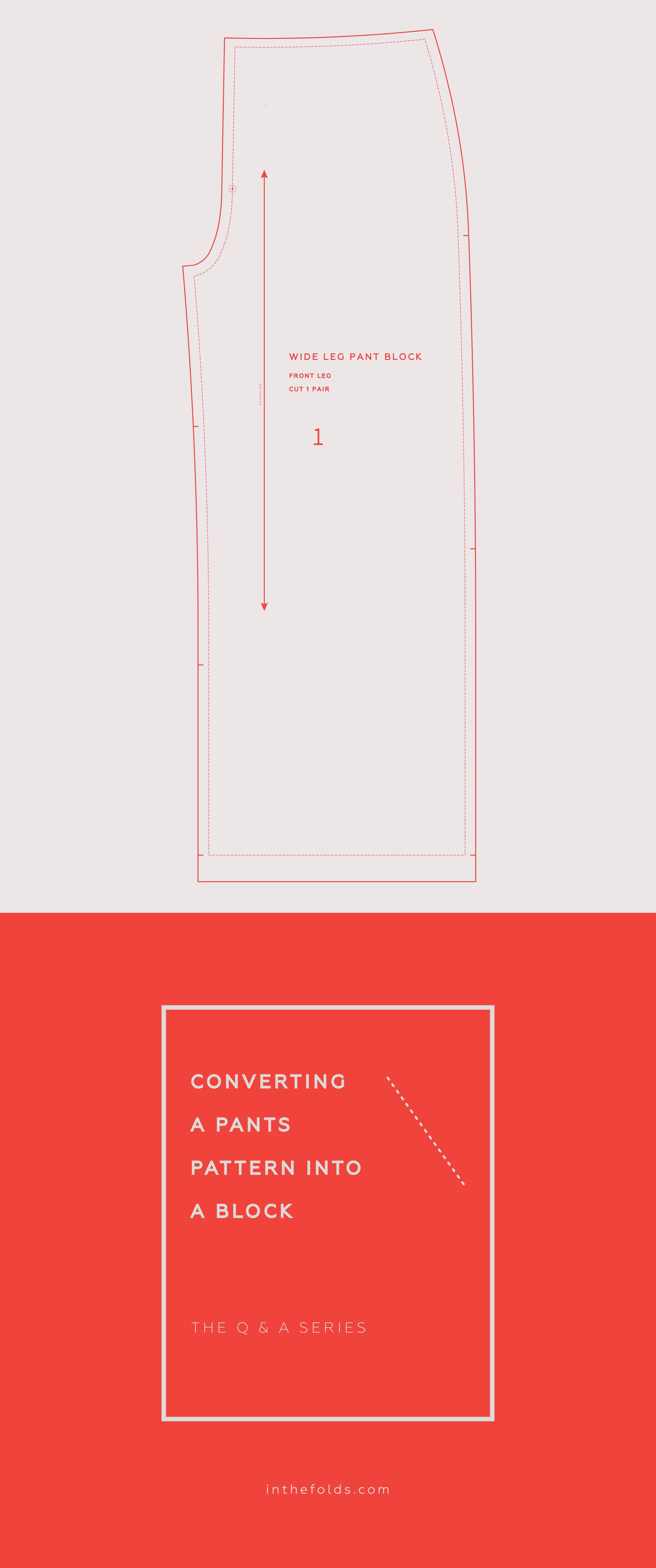THE Q & A SERIES
How to convert a pants pattern into a block
Hi Emily,
I’ve made the Peppermint Wide Leg pants pattern before and decided to use that pattern to work on fit for last month’s issue of Curated. I’m excited to be working on pants designing this month with you and the community, but I’m wondering if there is anything I need to do to the pattern before I get started?
Thanks,
Rachel
Hi Rachel,
This is a great question!
With our Pants Fitting Issue of Curated by ITF, many of our ‘Foldies’ (what we like to call our Curated by ITF community members) decided to use the Wide Leg Pants pattern as they already had it in their stash.
But if you’re going to use the Wide Leg Pants pattern to design other pants, you should convert it into a pattern block before you start. If you’re not sure what a pattern block is, read this post.
The Wide Leg Pants pattern is a sewing pattern for a finished pair of pants, and the design includes elements that a pants block may not, such as pockets. To convert it into a pattern block we need to remove these elements.
Fitting a pattern without pockets is much easier because you remove the need to alter several pieces when making fitting adjustments.
A pocket opening can also change the way pants fit. For example, it might make you feel like you have more room than you do, so we recommend getting the pants to fit right first and then add the pocket in later.
HOW TO REMOVE POCKETS FROM A PANTS PATTERN TO CREATE A PATTERN BLOCK
Step 1
Place the POCKET FACING [3] piece onto the FRONT LEG [1], lining up the waist seam, pocket opening and side seam. You can tape or pin in place. I like to use masking tape or magic tape as it's easy to peel off and won't damage the pattern.
Step 2
Place the POCKET BAG [4] onto the POCKET FACING [3], lining up the side seam, crotch seam, waist seam and bottom edge of the pocket. Tape or pin in place.
Step 3
Trace a copy of the pattern onto a piece of pattern paper. To trace a pattern you can either use transparent paper and place it on top of the pieces you are tracing, or use opaque paper under your pattern and use a tracing wheel to trace the lines.
When tracing a pattern, be sure to transfer the STITCH LINE and the CUT LINE, as well as the grainline, notches and any other pattern markings (in this case that means the drill hole on the front crotch).
If you like, you can transfer the pattern onto card for safe-keeping.
Update the pattern markings to reflect the new piece. In the example I have updated the pattern piece name to Wide Leg Pants block.
In the case of the Peppermint Wide Leg Pants pattern, there's nothing else we need to do. The back piece has limited details - just darts - so you can use the back piece as it is with the updated front piece.
Happy drafting,
Emily
RESOURCES MENTIONED IN THIS ISSUE
The Pants Sewing Skills Kit, Pants Fitting pattern & Fit Kit and the Pants Design Kit are the first, second and third parts of our Pants Sewing project series, which is available through our Curated by ITF subscription. Past issues are also now available for purchase by subscribers. More information can be found here.
The Wide Leg Pants pattern is a free pattern and can be found here.
What is a pattern block? - post can be found here.
For more issues of the Q & A series, you can check out the archive here.









